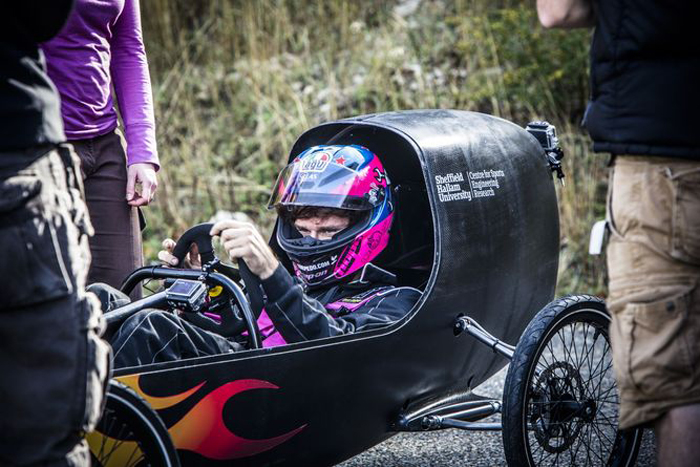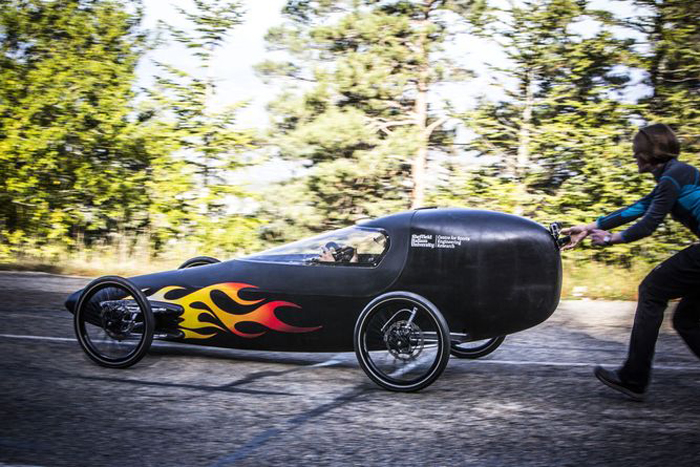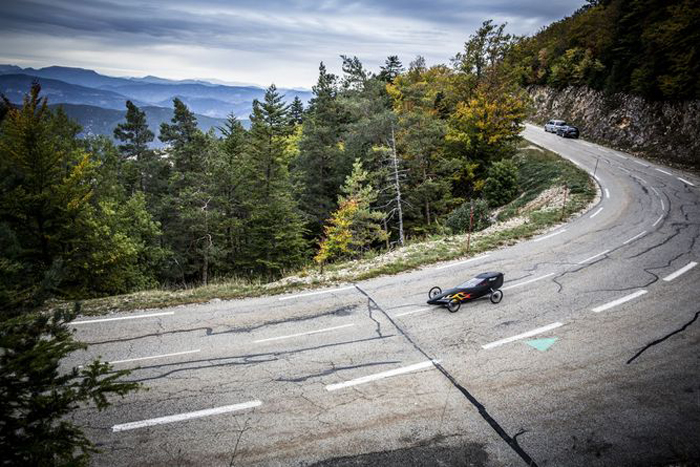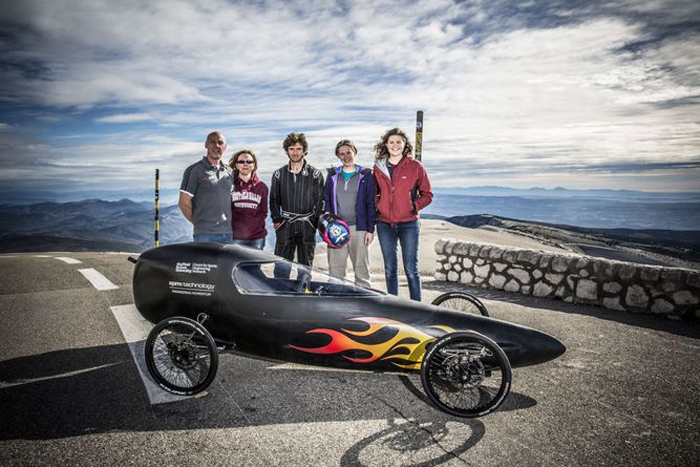
New World Record for 'Soapbox' Racer

This article was originally published on The Conversation. The publication contributed this article to Live Science's Expert Voices: Op-Ed & Insights.
I’d like to say that it’s not every day you get asked to try to break a world record with a speed-obsessed truck mechanic from Grimsby, but for us at the Centre for Sports Engineering Research it’s starting to become a bit of a habit.
Last year we designed and built a sled for the Channel 4 TV series Speed with Guy Martin to help Guy set the downhill toboggan world record of 83.49mph. Following its success the producers asked us to tackle another record, gravity racing. After a bit of discussion along the lines of “isn’t this just a sled with wheels?”, it was “challenge accepted!”

A gravity racer is un-powered vehicle capable of holding a driver without any form of on-board propulsion, also known as a soapbox or downhill go-karts. While this conjures up images of planks of wood attached to pram wheels, having spent the last four months designing and building one I can assure you it’s a little more sophisticated.
There was no official gravity racer world record, so for the Guinness World Records organisation to acknowledge our attempt they set a threshold of 84.4mph, the speed unofficially recorded by the Bodrodz Atomic Splinter in September 2012 in the US.
Search for an optimal design
Like all good scientists and engineers, we began by looking into the theory and how to use it to optimise our designs. Starting with a simple model we could easily see that rolling resistance and aerodynamic drag would slow the racer down, and only gravity would propel it forwards.
Rolling resistance is a measure of energy lost due to the friction between the surface of the wheels and the ground. It’s influenced by a number of factors such as wheel size and tyre pressure, as well as the quality of the road surface. We used a coast-down experiment where a basic kart was released at a set speed and we measured the distance travelled before it came to rest in order to compare the effects of different wheel sizes. The tyre pressure was then optimised on the day of the record attempt to match the surface conditions at the venue.

Minimising aerodynamic drag was a key part of the design. At high speeds, aerodynamic drag contributes more than 80% of the total resistance acting against the racer, so it was really important to keep this as low as possible. The steel tube frame of the racer was designed specifically to fit closely around Guy, the driver, and we used computational aerodynamic models to design a glass fibre outer shell that offered the least frontal area, the best drag coefficient, and that minimised any wake turbulence that would also add drag.
Naturally we then painted flames on it, having consulted Guy’s recognised scientific theory that if it looks fast, it goes faster.
Finding a venue
With gravity our only propulsion once underway, we needed a race venue that was sufficiently steep, long and straight. This actually proved more difficult than we thought, ruling out a surprisingly large number of venues. In some cases we were not allowed to race as we planned to break the national speed limit. In the end, we opted for the iconic Mont Ventoux in Provence, which often forms part of the Tour de France route.
Although our chosen section had a few bends, we were confident in Guy’s driving ability to not lose too much speed. Hope Technology in Lancashire kindly supplied us with four hydraulic disc brakes that allowed the racer to come to a controlled stop in a very short distance, which meant we could get the most out of each run.

Putting it to the test
On the day of the record attempt we used Guy’s feedback on how the racer handled to make minor adjustments to optimise it for higher speeds. Even slight shifts to the racer’s centre of gravity or its brake bias could have substantial effects on how the racer handled. It was important that these changes were done incrementally to allow Guy to familiarise himself with the new set-up.
On the second day of testing, we managed to find the perfect balance, and Guy piloted the racer to a new world record speed of 85.612 mph.
As you might have seen watching the programme, having set the record we tried to push it even faster, but during the attempt Guy lost control of the racer, dramatically rolling across the road before coming to rest upside down.
We had designed for a worst case scenario like a crash. But even so, the fact that Guy came away from it completely unscathed shows that we designed a racer that can not only break the world record, but stand up well to being broken, too.

Heather Driscoll is affiliated with the International Sports Engineering Association.
This article was originally published on The Conversation. Read the original article. Follow all of the Expert Voices issues and debates — and become part of the discussion — on Facebook, Twitter and Google +. The views expressed are those of the author and do not necessarily reflect the views of the publisher. This version of the article was originally published on Live Science.
Sign up for the Live Science daily newsletter now
Get the world’s most fascinating discoveries delivered straight to your inbox.










